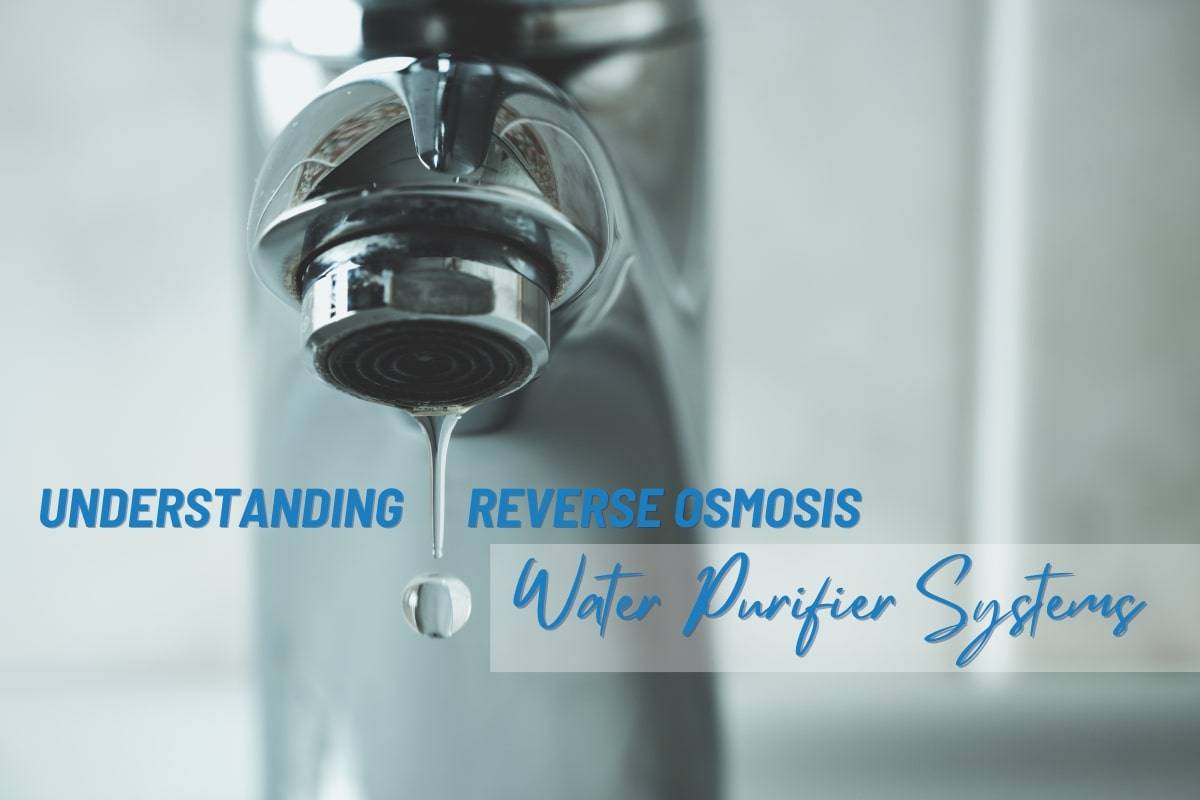In our current world, where water quality is becoming more scrutinized, many households are considering Reverse Osmosis Drinking Water Systems as a way to improve their water quality. But are they truly worth the cost? Let’s explore the features RO systems have to offer, their advantages and negatives, ease of installation, and if they’re the right option for you.
Understanding Reverse Osmosis Water Purifier Systems
Reverse Osmosis (RO) Drinking Water Systems make use of modern technology to remove contaminants in tap water, delivering safe and clean drinking water to your home. This blog post outlines the main features of RO filters, analyzes how reverse osmosis systems work, their efficiency with countertop and RO filter systems, and assists you in determining if they’re worth the investment for your family.
What Exactly Is Reverse Osmosis?
Reverse Osmosis Drinking Water System is a process that purifies water using semi-permeable membranes to remove molecules, ions, and other larger elements. By applying water pressure first, RO systems push water through the membrane, leaving contaminants behind and delivering clean, drinkable water.
The Benefits Of Reverse Osmosis Water Purifier Systems
- Removal of contaminants: Reverse Osmosis Drinking Water Systems are extremely effective in eliminating a range of contaminants typically present in tap water, such as arsenic, lead fluoride, chlorine, nitrates, and many more.
- Improved Odor and Taste: eliminating impurities that can affect the smell and taste of RO systems can improve the overall quality and taste of drinking water.
- Healthy Drinking Water: With lower levels of harmful chemicals, RO water is typically considered healthier and safer for regular consumption.
- Cost savings: While the initial cost could be more expensive, investing in a reverse osmosis drinking water system could help save money in the long term by reducing the necessity to purchase bottled water and potential healthcare costs associated with drinking contaminated water.
Things To Consider Before Investing
Before you decide on the RO feature, think about these aspects:
- Initial Cost: RO systems generally require a greater initial investment in comparison to other methods of filtration. However, this expense is justified by future savings and health advantages.
- Maintenance: Regular maintenance, like cleaning and replacing filters, as well as periodic sanitization, is crucial to maintaining high system performance and the quality of water.
- Water efficiency: RO systems generate purified water as well as waterborne waste. Knowing the water waste ratio that the particular system selects is essential for households that are concerned about water.
Comparison of Competitors
To ensure that this blog post gives users access to the most useful and precise information, let’s look at material from three other competitors:
- Competition A: focuses on technical specifications but lacks a personal sense of.
- Competition B: provides basic benefits but does not address any potential disadvantages or a thorough cost analysis.
- Competition C: offers a short overview and a few details on long-term savings and health effects.
What Are The Benefits Of An RO System?
It is worth investing in a Reverse Osmosis purifier for water. If:
- Are you concerned about water Quality: If your tap water has excessive concentrations of contaminants or toxins, the RO system provides the most reliable water purification.
- Health benefits: People with particular health issues or weak immune systems can benefit from the consistency of RO water.
- Long-term savings: Despite the higher initial cost, RO systems could help save money in the long run by decreasing dependence on bottled water and resulting medical costs
Reverse Osmosis Drinking Water System
The Reverse Osmosis Technique
Reverse Osmosis (RO) is a water filtration process used to produce distilled water, employing a semi-permeable membrane to filter out ion molecules and larger elements from the water. This membrane selectively allows water molecules to pass through while preventing harmful substances like dissolved solids, bacteria, chemicals, and other impurities from contaminating the water. The outcome is purified water of excellent quality suitable for drinking, making Reverse Osmosis Drinking Water Systems an ideal choice for households seeking clean, safe drinking water.
The Components in An RO System
- Semi-Permeable Membrane: The heart of the RO system is this membrane, which permits water molecules to move through under pressure while removing any contaminants.
- Pre-Filters: These filters eliminate particles like chlorine, sediment, and other large particles that can cause damage to the RO membrane, or impact the taste of water.
- Post-Filters: After purification, post-filters can be employed to enhance flavour by removing any leftover flavours or smells.
- Storage Tank: The storage tank stores purified water until it is needed and ensures a constant supply at any time.
How RO Systems Work
- Method of Filtration: The water enters the RO system, and pre-filters are used to remove chlorine and sediment. After that, the water gets pressurized and forced through a semi-permeable membrane. Here, contaminants are entrapped. Water molecules that are purified pass through the membrane, and are then collected to be used.
- Reject water: Apart from producing purified water, RO systems utilize semipermeable membranes to remove various contaminants. They also generate rejected water, which contains high levels of total dissolved solids and other impurities. Depending on the system’s design, this reject water either removed or recycled to ensure efficiency and minimize environmental impact.
Benefits Of Using The RO System
- Removes Contaminants: RO systems energetically remove a range of contaminants, such as heavy metals such as mercury and lead, as well as chemicals like fluoride and chlorine and microorganisms, such as viruses and bacteria.
- Enhances quality and taste: removing the impurities that cause a problem, RO systems enhance the flavor, smell, and overall quality of drinking water.
- Safety and Safety: RO water is regarded as safe to drink due to lower levels of harmful substances, which makes it suitable for drinking and cooking.
The Factors To Consider When Deciding on An RO System
- Cost of Upfront: RO systems are usually more expensive to start with when compared to standard filtration methods however they provide long-term savings on bottles of water, as well as the possibility of healthcare costs.
- Maintenance: Regular replacement of the filter and system sanitization are essential to ensure high performance and guarantee water quality.
- Water efficiency: RO systems create purified water, but they also produce water that is rejected. The ability to manage and reduce water waste is crucial for eco-conscious consumers.
Reverse Osmosis Systems
Reverse Osmosis (RO) systems, such as those that are mounted on countertops, are the most advanced water treatment systems that are specifically designed to increase drinking water’s quality by eliminating impurities and contaminants. These systems function through the natural process of osmosis, which allows water molecules to transfer from an area with a low solute concentration to an area with a greater concentration of solutes through an impermeable membrane.
How Reverse Osmosis Does Its Work
- Semi-permeable Membrane: RO systems utilize a specialized semi-permeable membrane that allows water molecules to flow through while preventing large molecules, particles, and contaminants.
- High Pressure: The water flows through the membrane at high pressure, usually created through a pump or domestic pressure. This pressure aids in the separation of impurities from pure water.
- Removal of contaminants: Semi-permeable membrane effectively removes a range of water-borne contaminants, such as dissolved solids chemical compounds, heavy metals bacteria and viruses.
Essential Components In RO Systems
- Pre-Filtration Before water reaches the RO membrane, it typically goes through pre-filters to eliminate larger particles and solids, which may prolong the lifespan of the RO membrane.
- RO Membrane The core of the system, The RO membrane is responsible for segregating pure water from the presence of contaminants by molecular size and charge.
- Post-Filtration After purification, water can undergo post-filtration to enhance quality and taste, often using activated carbon filters to eliminate any lingering tastes and odors, ensuring it meets the standards of a Reverse Osmosis Drinking Water System.
The Benefits Of Reverse Osmosis Systems
- Effective Removal of Contaminants: RO systems are renowned for their capability to eliminate various contaminants, such as heavy metals (like mercury and lead) as well as dissolved solids, fluoride, chlorine and microorganisms.
- Improved quality and taste: by removing contaminants that can affect flavor and odor RO systems can boost the overall quality of drinking water.
- Healthy Drinking Water: with lower levels of harmful chemicals, RO water is thought to be healthier and safer to drink, especially for people with health issues or compromised immune systems.
Things To Consider Before Deciding On An RO System
- Initial Cost: RO Reverse Osmosis drinking water systems typically involve higher initial costs compared to other water filtration methods. However, they provide long-term savings by reducing the need for bottled water and potential healthcare expenses.
- Maintaining Requirements: Regular maintenance, like changing filters or sanitizing the system, is vital to ensuring the highest performance and quality of water.
- Water efficiency: RO systems not only filter water but also create pure water and wastewater. Understanding the water usage ratio of the reverse osmosis system is essential for environmentally conscious homeowners.
Reverse Osmosis Water Filter explained
The process of reverse osmosis system (RO) can be described as an effective method of purifying water which involves moving water over a semipermeable membrane to get rid of impurities and clean water. Here’s how it works:
- Membrane Technology The heart of a Reverse Osmosis Drinking Water System is its semipermeable membrane. This membrane consists of minuscule pores that enable water molecules to pass through, effectively blocking larger molecules and contaminants like heavy metals, dissolved solids, microorganisms, and chemicals.
- Applications of Pressure RO systems use pressure on the water at the end of the membrane. This pressure pushes pure water molecules to pass through the membrane, releasing pollutants that are disposed of as water.
Removes Contaminants
RO systems are extremely effective in the removal of a variety of harmful contaminants that can be found in tap water. These include:
- Metals are heavy such as arsenic, lead, and mercury.
- Solids that dissolve, such as minerals and salts,
- Chemicals such as chlorine, fluoride, and pesticides.
- Bacteria and viruses are microorganisms that include.
Improved Water Quality
RO When it comes to clean water, Reverse Osmosis Drinking Water Systems can significantly enhance both the flavor and odor of filtered water, as well as the overall quality of the water and filtration process. The outcome is pure, clean water pressure that is safe for drinking.
Use And Applications
RO water purification filter systems are commonly used in households to produce fresh, great-tasting water directly from the kitchen sink or tap and plastic bottles. They are also employed in industrial and commercial settings where high-quality water, free of contaminants like chlorine, is essential. RO systems ensure consistent flow rates and can include an in-line storage tank to provide continuous access to Reverse osmosis-purified water systems throughout the entire house.
Transform Your Home’s Water Quality With Pristine Water Solutions!
Are you considering investing in clean, RO-filtered water that’s both healthy and safe for your entire family? At Pristine Water Solutions, we specialize in installing premium Reverse Osmosis water purifier systems. These systems ensure your drinking water is free from dissolved solids and eliminate the need for plastic water containers. Our experts handle everything from the drain line and water tank to your RO faucet. Discover how a Reverse Osmosis water purifier system works and make a lasting investment in your health and well-being. Contact us today to schedule an appointment and learn more about the RO system that will enhance your home’s water quality.



